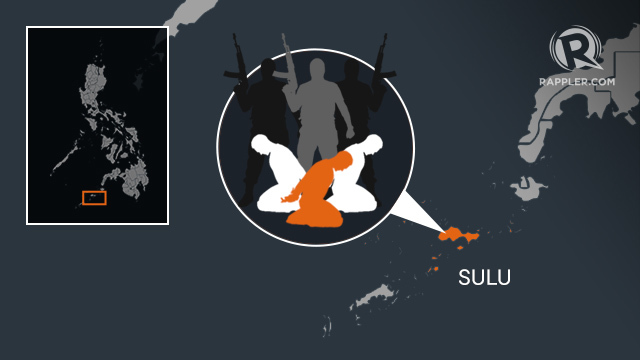US forces last year challenged the excessive maritime claims of 13 countries throughout the world including the Philippines, China, Vietnam, Malaysia and Taiwan, the Pentagon said.
In a report released on Monday, it said a US Freedom of Navigation (FON) program was implemented actively every year against excessive maritime claims by claimants in every region of the world in support of the Defense Department’s global interest in mobility and access.
The FON program encompasses all of the rights, freedoms and lawful uses of the sea and airspace available to all nations under international law.
The report provided a summary of excessive maritime claims challenged by US forces in fiscal year 2015 from Oct. 1, 2014 to Sept. 20, 2015.
Eight of the 13 countries challenged were Argentina, Indonesia, India, Iran, Libya, the Maldives, Nicaragua and Oman.
The other five have competing claims to parts of the South China Sea, including the West Philippine Sea.
China’s excessive maritime claims were listed as excessive straight baselines, jurisdiction over airspace above the exclusive economic zone (EEZ), restriction on foreign aircraft flying through an air defense identification zone (ADIZ) without the intent to enter national airspace, domestic law criminalizing survey activity by foreign entities in the EEZ; and requiring prior permission for innocent passage of foreign military ships through territorial sea.
The Philippines was cited for claiming archipelagic waters as internal waters and Vietnam for excessive straight baselines and requiring prior notification for foreign warships to enter its territorial sea.
Taiwan was faulted for requiring prior notification for military or government vessels to enter its territorial sea and Malaysia for requiring nuclear-powered ships to enter its territorial sea and requiring consent for military exercises or maneuvers in the EEZ.
The Association of Southeast Asian Nations (ASEAN) and Australia underlined the importance of maintaining peace, security and stability and freedom of navigation and overflight in the South China Sea.
At the 28th ASEAN-Australia Forum held in Canberra last April 21 and 22, ASEAN and Australia agreed that disputes should be resolved peacefully, including full respect for legal and diplomatic processes, and without resorting to the threat or use of force, in accordance with universally recognized principles of international law, including the 1982 UNCLOS.
The Philippines, led by Assistant Secretary Helen de la Vega of the Department of Foreign Affairs (DFA)-Office of ASEAN Affairs, participated in this year’s forum that was co-chaired by Australian Gary Quinlan and Country Coordinator Aung Lynn of Myanmar.
During the dialogue, ASEAN and Australia reviewed the status of political security, economic and socio-cultural cooperation in support of ASEAN’s Vision 2025. Both sides committed to deepen existing cooperation as they prepare for the 1st biennial ASEAN-Australia Summit in September 2016 in Laos.
The DFA said there was an extensive discussion on regional and international developments.
De la Vega said “the Australians want to deepen engagement with ASEAN and regional partners would maintain a rules-based regional order.”
Both sides concurred that the regional architecture must continue to evolve as an ASEAN-centric and rules-based order and agreed to explore further joint action under ASEAN-led mechanisms.
ASEAN and Australia are both keen to advance ASEAN-Australia connectivity.
Both sides welcomed the creation of the ASEAN-Australia Council, which is taking a lead in promoting women’s economic empowerment and educational exchanges.
Japanese ship visit
Another Japanese warship made a port call in the Subic Bay Freeport yesterday, underscoring the increasing visits of the Japan Maritime Self-Defense Force (JMSDF) vessels amid the strengthening of defense cooperation between the Philippines and Japan.The Japanese helicopter carrier JS Ise docked at the Alava Pier for a four-day goodwill visit and maritime training and cooperation between Japanese and Philippine Navy personnel.
The ship carries four helicopters and has 360 officers and men, headed by Capt. Masaki Takada.
JS Ise’s visit to Subic is the third time that JMSDF ships made a port call in the country this year.
Two warships, Uraga and Takashina of the JMSDF Minesweeper Division 51 under the command of Capt. Toshiro Takaiwa, visited Manila on March 2.
The ship visits took place after the two countries signed an agreement for Japan’s transfer of defense equipment and technology to the Philippines.
Submarine ship Oyashio (SS-551), along with two destroyer ships, also visited Subic on April 3.
The ship visits, according to Japanese and Philippine Navy officials, aim to enhance “the already strong relationship” of the Philippine Navy and the JMSDF and promote regional peace and stability.
It also aims to enhance maritime cooperation, according to Philippine Navy Capt. Lued Lincuna, director of the Naval Public Affairs Office.
http://www.philstar.com/headlines/2016/04/27/1577249/us-challenges-13-states-sea-claims








